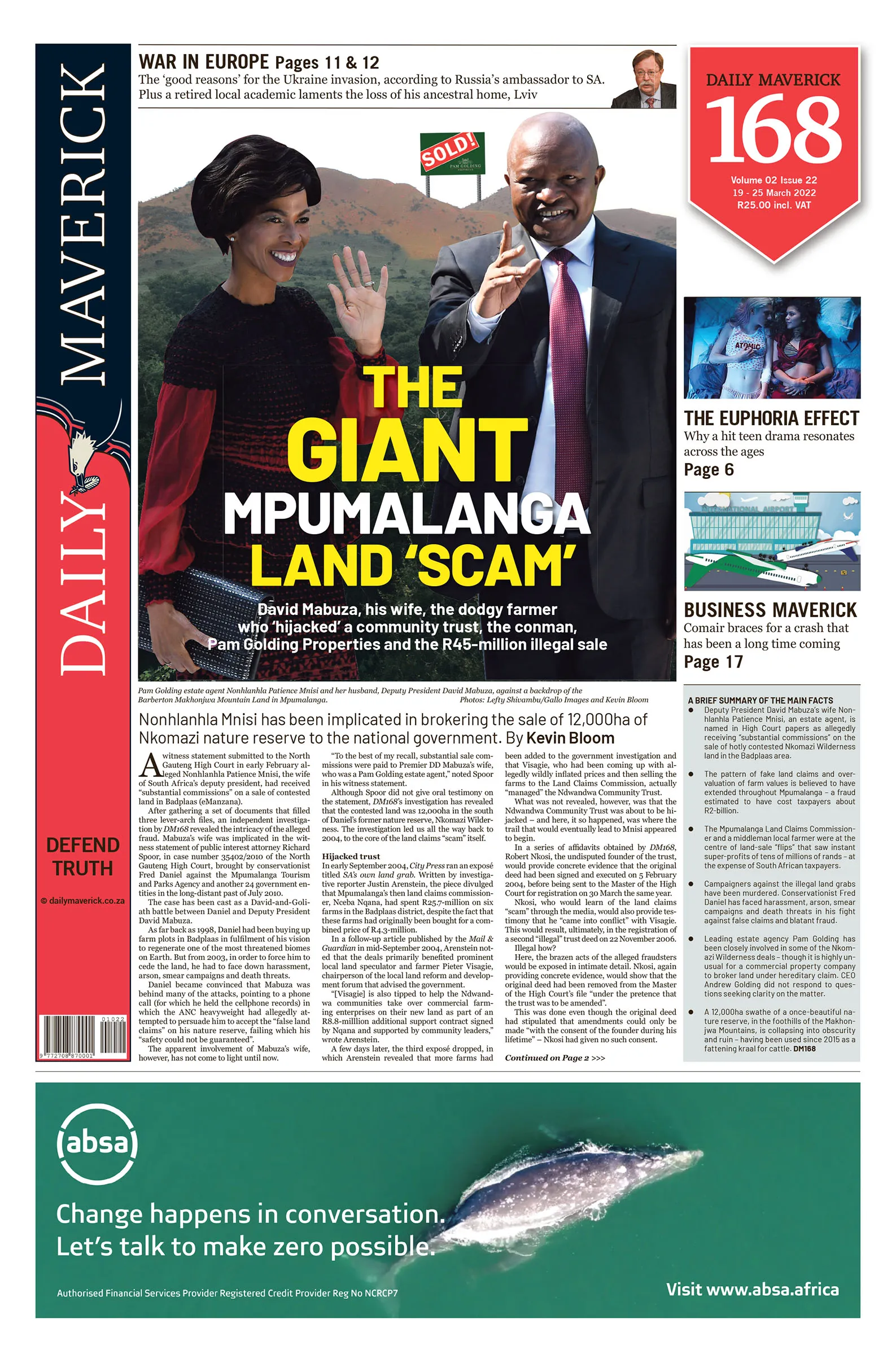Tighter monetary policy was widely expected to hurt bonds and equity valuations, especially in the ultrastretched growth stocks such as tech. With an additional Russian invasion of Ukraine, the possibility of all-out war in Europe and an all but imminent Russian bond default, one can understand why equity investors are capitulating.
Since the start of the year, the market moves have been violent. The tech benchmark Nasdaq index is down one-fifth in 2022, and the S&P 500 and the benchmark European index the Stoxx Europe 600 are both roughly 13% lower. Protected by soaring commodity prices, local investors have had a comparatively decent 2022 thus far, having only lost 5% in the JSE’s Top 40.
Smashed thanks to calamities in China and Russia, exposure to locally listed megacaps Naspers and Prosus has hurt.
Fixed income, usually a safe haven in choppy seas, has not provided much relief. Soaring inflation has led to developed world benchmark yield curves steepening and widening over the past three months as yields rise (bond yields move inversely to prices). According to Bloomberg, the 10-year real yield in the US (bond yields minus inflation) continues to be at a record low of -4.6%, making fixed income an unattractive asset class. Investors have duly piled into cash.
Like the local equity bourse, South African bonds have fared comparatively better than those internationally. The SA 10-year continues to hover at around 10%, largely because of the support offered to the fiscus from burgeoning commodity export cashflows. In addition, with a current Consumer Price Index of 5.7%, South African bonds offer an attractive real yield of more than 4% for investors.
Markets are clearly indicating that tough economic climes lie ahead. Indeed, in some parts of the world, for example Europe and the UK, it would seem that the stagflation narrative is moving to one of a distinct probability of full-blown recession with persistent inflation in mid- to late-2022. Even the usually measured European Commissioner for the Economy Paolo Gentiloni sounded funereal before this week’s Eurogroup meeting: “Energy prices are likely to weigh heavily on the chances of a sustained European economic recovery.”
There is no doubting the damage Russian energy dependence is wreaking on the eurozone economy. Addicted to mainlining Russian gas straight into its economic veins, the costs to Europe of going full “cold turkey” and blocking Russian energy exports are becoming apparent. European investor confidence, a lead indicator, has plummeted since the war started.
A possibility that has emerged more recently, but one that is far less likely, is a recession in the US. Economists tend to view the “base case” scenario for the US economy as a gradual slowdown in mid-2022 with supply chain bottlenecks slowly easing, thereby helping the Fed to bring inflation under control. Job openings in the US labour market remain very robust.
However, the risks of a downturn in the US remain. Sky-high oil prices, up 30% in a bit over two weeks, are the most important factor. Wheat and corn prices, up 17% and 10% respectively over the same period, exacerbate the problem. These spiralling input costs could put severe pressure on consumer spending and corporate investments, acting as a handbrake on the whole economy. A heavy-handed Fed interest rate tightening cycle could be the final straw and push the US economy into a slump.
As ever, SA will not be spared the misfortunes of the global economy. Rising interest rates in the US, slowing global consumer demand, and record food and energy prices will affect the South African economy. However, windfall profits and tax revenue from mining exports should provide some solace to the coffers of the National Treasury, the current account balance, the value of the rand and South African government bonds. Though a slowdown is likely, chances of a full-blown recession in South Africa seem slim. It is a strange irony of history that mining, a legacy industry of apartheid, continues to be the one part of the economy on which South Africa can rely deep into the 21st century.
The fundamental question investors have to ask is whether all the bad news in the global economy has been adequately priced into markets. If so, is this not a moment to selectively increase equity exposure where sell-offs have been potentially overdone? European banks, for example, make a compelling case for being on a fire sale; it is hard to believe that Société Générale is worth 40% less today than last month, which is what the bank’s market capitalisation indicates. Locally, it can be argued that bargains can be had in Mondi and Richemont, both down about 30% year to date.
Seeing the current moment as a buying opportunity is simply entirely contingent on there being no further nasty surprises from higher-than-expected inflation, lower-than-expected growth, or an even more calamitous geopolitical context. One would have to be a brave person to bet on it. DM168
This story first appeared in our weekly Daily Maverick 168 newspaper which is available for R25 at Pick n Pay, Exclusive Books and airport bookstores. For your nearest stockist, please click here.

















 Become an Insider
Become an Insider
Comments - Please login in order to comment.